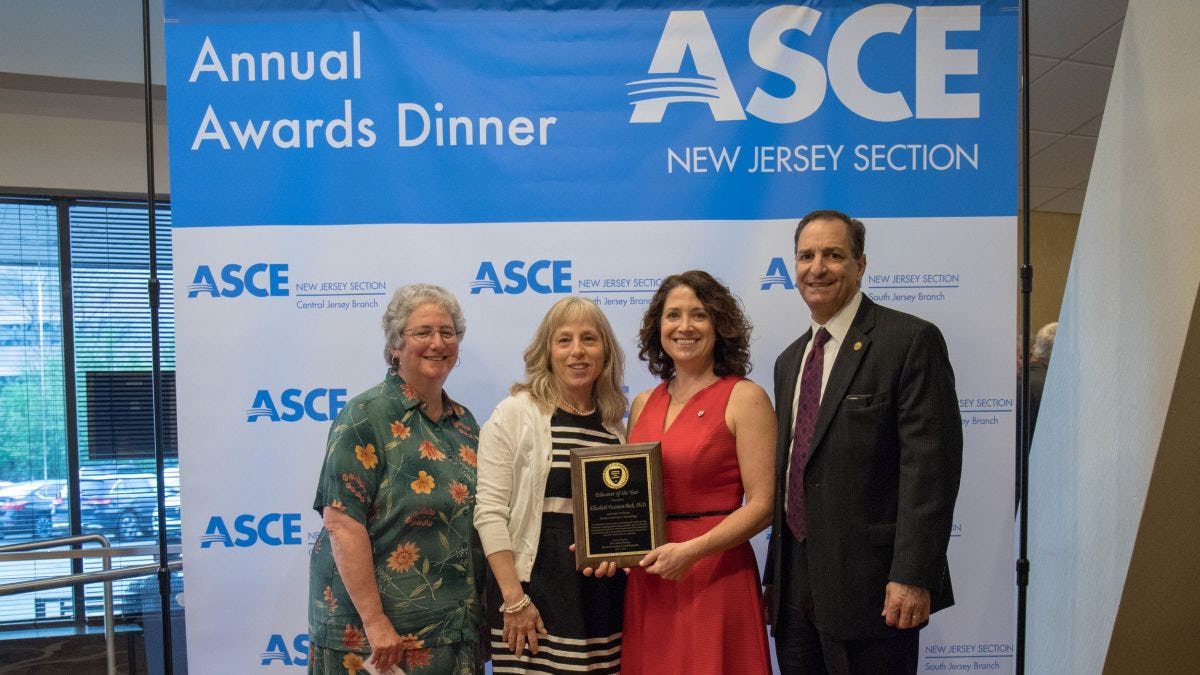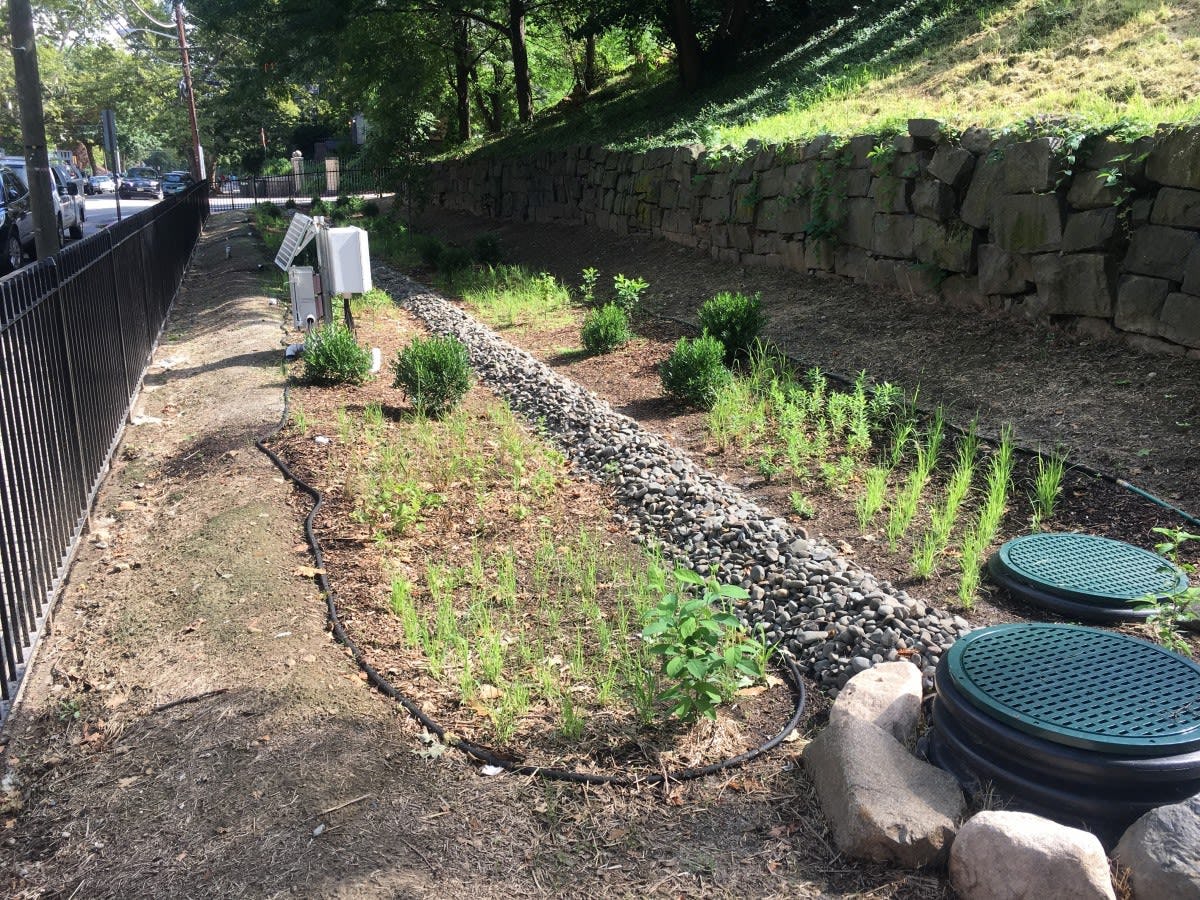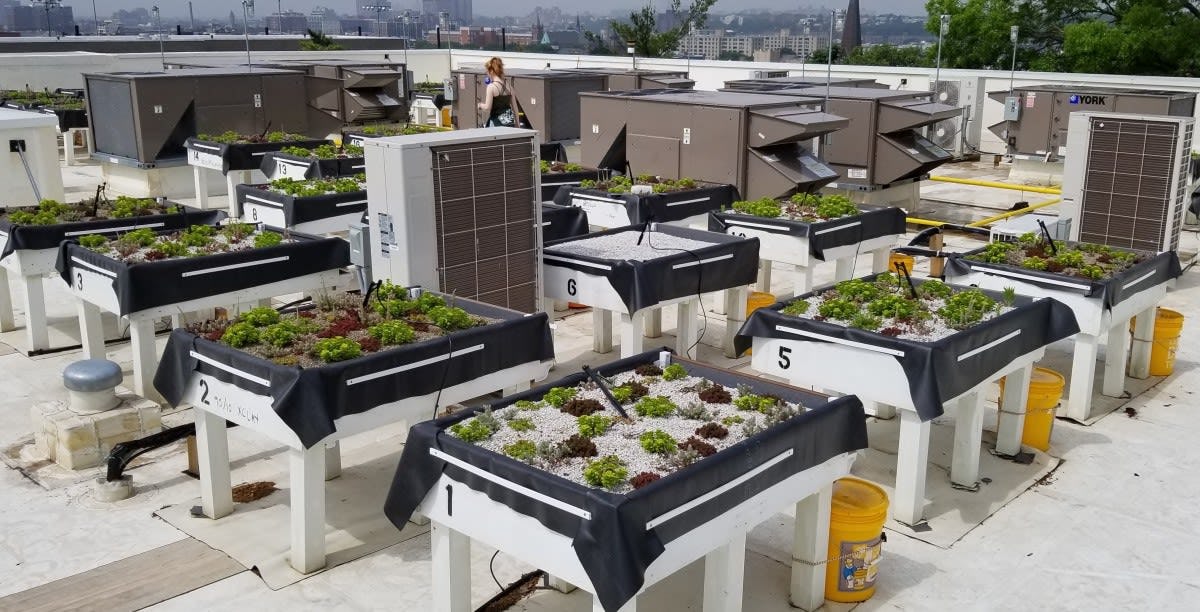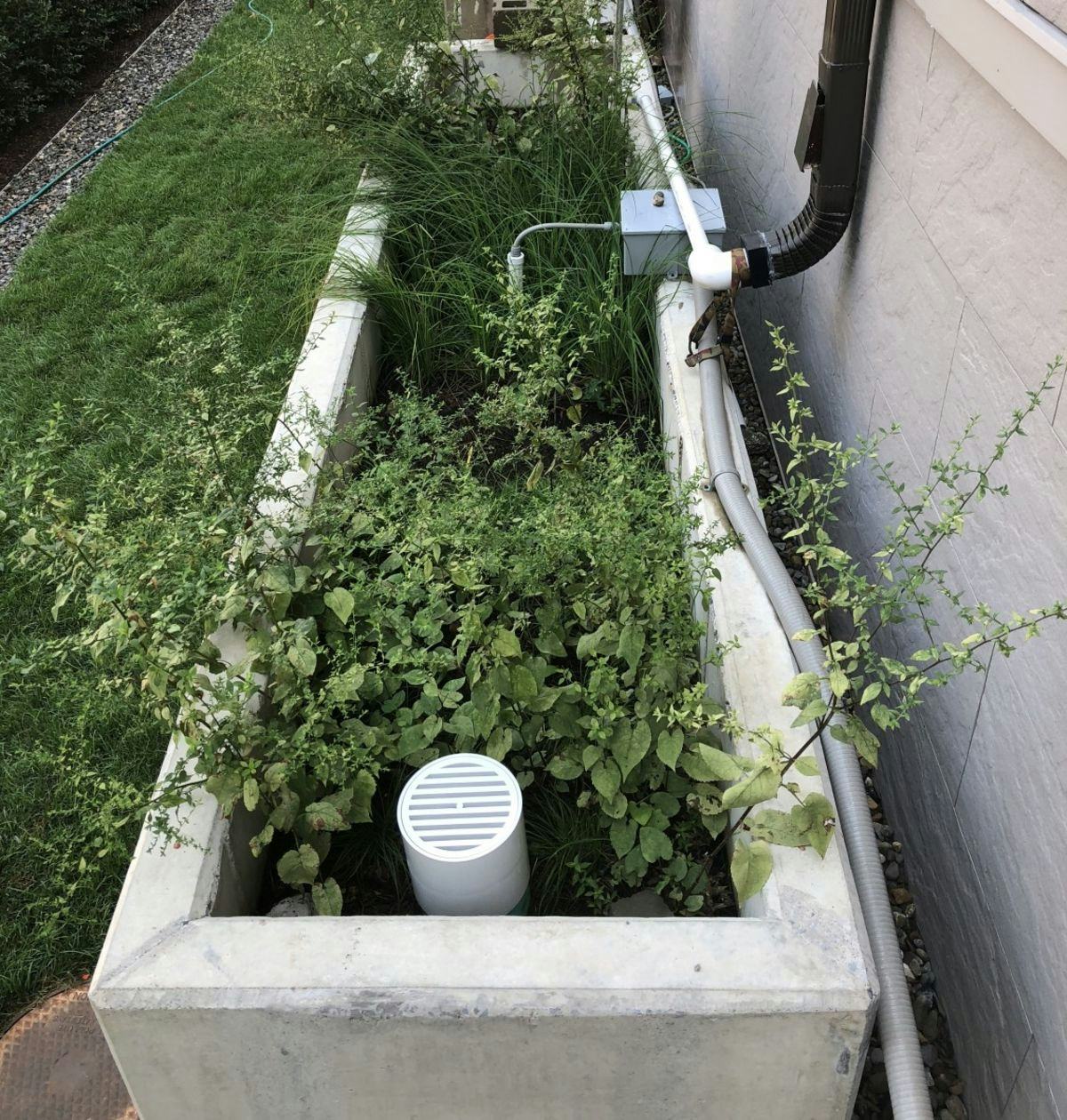How Stevens is Reducing Stormwater Runoff in Hoboken
Researcher and renowned expert Elizabeth Fassman-Beck brings green infrastructure innovations to Hoboken and North New Jersey
"My life revolves around water," says Elizabeth Fassman-Beck, associate professor in Stevens Institute of Technology’s Department of Civil, Environmental and Ocean Engineering.
"I grew up sailing and swimming, I wrote college essays about saving water and saving the world, I did my graduate work on stormwater. Everything I've done since has flowed from those experiences."
Today, Dr. Fassman-Beck is a globally recognized expert on green roofs that minimize water runoff, she studies urban stormwater management, she co-authored Living Roofs in Integrated Urban Water Systems, and she recently received the Educator of the Year Award from the New Jersey chapter of the American Society of Civil Engineers.
She has devoted her career to mitigating the effects of stormwater runoff, and is making major strides for both Stevens and New Jersey.
Mitigating urban stormwater runoff
Stormwater runoff is rainfall that flows over the ground instead of soaking into it, causing flooding and erosion, and carrying pollutants including trash and micropollutants we can’t see directly. Cities with combined sewer systems, which are buried pipes that carry both stormwater runoff and domestic sewage, suffer because the high volume of stormwater runoff can cause an overflow of domestic sewage into local streams and rivers. Unmanaged, stormwater runoff can damage the environment, threaten public health, and harm aquatic habitats—and is a particularly difficult problem in urban environments. "At its lowest point, Hoboken is only a few feet above sea level, and the combined sewer system can't handle all of the stormwater runoff," Fassman-Beck explains. "The overflow runs into natural water bodies where untreated, pathogens can pose human health and environmental hazards. We're exploring creative ways to retrofit existing infrastructure using a suite of technologies collectively called Green Infrastructure that delay how quickly runoff travels and diminish the volume of runoff."
A "Living Laboratory" designed to produce results
Fassman-Beck and her students are doing that through their "Living Laboratory" with green infrastructure facilities strategically placed in three campus sites:
The newly constructed North Building features 40 green roof tables, a rain garden and four bioretention planter boxes.
The rain garden on Eighth Street and Hudson is intended to stop nuisance flooding generated by runoff from the Davidson Lab roof. The rain garden grew from a Stevens senior design project that earned its creators second place in the 2015 U.S. Environmental Protection Agency Campus RainWorks Challenge. Although it debuted to a rocky start amid March snowstorms, it's been replanted and Fassman-Beck and her research team are working to get performance monitoring sensors up and running.
The ABS rain garden is intended to reduce the volume of runoff from the ABS building roof. It provides a unique research opportunity to monitor performance in a very confined space—almost defying the industry’s usual design guidance.
"Because we're working in uncontrollable weather that can never be replicated, every system is replicated in some manner," Fassman-Beck says. "For example, we have 40 North Building green roof tables, and we justify the scientific validity of our results by testing every design combination on at least two tables. With the rain gardens, we have three different designs across campus, but they’re all functioning under the same natural rainfall."
These facilities and their components are precisely designed, with an aim to optimizing the configuration. "Even the type of sand matters," Fassman-Beck says. "For example, pumice holds water, which gives us more bang for the buck to retain stormwater in all of our Green Infrastructure systems, compared to some other engineered growing media components. On our green roofs, we’re using innovative materials to contain nitrogen and phosphorus and further minimize environmental impacts. Not much research exists on green roof water quality, so we're simultaneously defining the problem and the solution." It is designed to produce results. Making this design was no easy task.
"I deeply appreciate Bob Maffia, vice president for facilities and campus operations, and his team—Frank LoCastro, assistant vice president for facilities and campus operations; Bill Nagle, shop manager; Lisa DeMarco, senior project manager for the Eighth Street and Hudson rain garden; and Richard Snyder, senior project manager—for being receptive to our ideas, and to making things happen in a manner that makes sense for our research and for the university."
Big Data meets stormwater
Although some of the Living Laboratory’s monitoring systems aren’t fully functional, they are already generating data.
"Our initial data is proving our concept, and we can see the water discharge is delayed and campus runoff is abating," Fassman-Beck says. "Jim Rowland, Stevens systems and enterprise professor developed programs that automate and consolidate the huge amount of raw data we're generating into formats we can use. I call it Big Data meets stormwater! It opens opportunities on how to look at and use the data—and on how to encourage software engineering students to explore career paths in sustainable development."
This summer, Fassman-Beck's student researchers include Pinnacle Scholars Devin Dragon, chemical engineering; Katerina Slesarevich, environmental engineering; Samantha Conte, a civil engineering student who was actually part of the original Living Laboratory team. Yang Cheng, a second year doctoral student, has been working on the green roofs. Fassman-Beck has also helped her research students obtain international research assignments and facilitated their access to present at state and national conferences.
Breaking new ground
Fassman-Beck and her students are also developing a curriculum to help spark interest among middle school students.
"We have partnered with Gail Baxter, assistant director for research, from the Center for Innovation in Engineering and Science Education on a two-year, $400,000 National Science Foundation grant aiming to spark interest in careers in green infrastructure amongst middle schoolers," Fassman-Beck says. "Using all the different technologies in the Living Laboratory as a platform/demonstration, our curriculum aims to explain the science and engineering principles behind green infrastructure and stormwater management. We want to introduce them to experts from a range of disciplines and show them how lots of different skills are involved in making green infrastructure work."
"We will track student and teacher reactions to the program and interest in green infrastructure careers—this part is about educational research."
In order to track all of that, Fassman-Beck is being assisted by Ph.D. student, Kiera Nissen, through the Provost’s Fellowship. "Her undergraduate degree is in civil engineering, but her other passion is STEM education," says Fassman-Beck. "She has a lot of experience with K-12 students, which is really going to enrich our current project."
Fassman-Beck is keenly aware that she and her students are breaking new ground every day.
"The Living Lab helps us educate today’s decision makers, and a big part of that is educating the public at large. Green infrastructure is unique amongst infrastructure in that its success is tied to public engagement and acceptance. On campus, these systems were introduced because it's the right thing to do—not only to teach our students, but also to be a responsible neighbor."
"Stevens is going beyond typical minimum legal requirements in stormwater management," says Fassman-Beck. "We are proud of Stevens' institute-wide commitment to sustainability and eager to contribute in any way we can."
Elizabeth Fassman-Beck will be speaking at Stevens TEDx event on September 12. Tune into the Livestream to watch.



